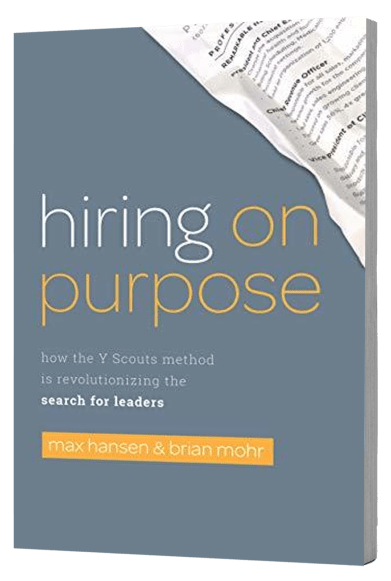If you were to name successful golfers, you’d mention individuals like Tiger Woods, Jack Nicklaus, Arnold Palmer, and Phil Mickelson. Even though these athletes get the fame and glory, could they really get there without a good caddy to haul their clubs and offer advice on the course?
The same goes for a CEO. The attention is on you as you set the course for the company, inspire teams, scale the organization, and lead with resilience. But you need an expert partner who can handle the details while you lead out. Enter the second-in-command (2IC).
Hiring a second-in-command isn’t about sharing your power or lessening your influence. Top executive recruiters for CEO seconds-in-command have found that every leader needs a right-hand man or woman to complement their strengths.
As you’ll discover here, you need an executive partner who embodies your strategy, builds operational rigor, and frees you to focus on your company’s future.
Table of Contents
Toggle1. Efficient Leadership
Every CEO has a full plate. But when you try to manage every detail, something suffers: decisions stall, progress lags, and burnout creeps in. You need to delegate, not to a robot assistant who can accomplish simple tasks, but to a leader who shares your goals and instinctively knows how to help you reach them.
A trusted second‑in‑command can be called an integrator, chief operations officer (COO), or president, and they know how to make your company an operational weapon. For example, when your product development team asks for your approval every five minutes, they organize a better system to free up your time and creativity. They can delegate the details and relieve you of operational pressure.
Consider a tech CEO who constantly puts out fires while attempting to improve the current system. She didn’t have the bandwidth to meet with investors or map out long-term strategies. She was stuck in the details of the day. So, she hired a second-in-command who was vetted by a tech executive search firm.
Bringing on this strong partner allowed her to offload tedious tasks, minor decisions, and customer service issues. Suddenly, she had time to develop and lead out on a vision for expanding the company’s technology services. The CEO maximized her leadership strengths by sharing responsibility with a capable leader.
2. Decision-Making Support
As CEO, you thrive on strategic decisions to steer your company into a successful future. But it’s not easy. You have to understand data from every part of your company, study the current economic climate, and predict how your changes will affect your organization. But you don’t have to do it alone.
Like the caddy advising a pro golfer about the lay of the green and the right club, your second-in-command offers decision-making support. They can review the data, brainstorm options, play devil’s advocate, refine ideas, flesh out execution, consider worst-case scenarios, and keep the choice focused.
Take a CEO considering a merger for his manufacturing company. If he were on his own, it could be easy for him to lose track of details amidst the many decisions. The 2IC acts as a second pair of eyes to ensure nothing is forgotten. When the CEO faces hard choices about internal headcount planning and layoffs, his 2IC acts as a sounding board to keep him focused on the decisions at hand and ease his doubts.
With your second-in-command’s support, you’ll see faster decision cycles and fewer low-stakes choices taking up your time. You will feel less pressure as you share the decision-making process with your co-leader.
3. Increased ROI
Most CEOs hesitate to bring on senior leadership until hiring their second-in-command is an emergency. But that’s like waiting to invest in the stock market until you are desperate to make money. You might turn a profit, but it won’t be as significant if you started earlier. Hiring a COO before it’s urgent also maximizes the return on investment in your leadership.
A trusted second-in-command is an amplifier. They drive operational improvements, strengthen leadership, solidify culture, deepen accountability, and improve decision cycles. They leverage their strengths to multiply your vision. When the business needs a tune-up rather than a full rebuild, the right leadership pair increases your ROI.
For example, a service company CEO brought on a second‑in‑command after their growth hit a plateau. The COO built quarterly operational rhythms and introduced cross‑functional OKRs to focus on efficient operational performance. Within one year, customer satisfaction rose and delivery quality improved by 25%. Additionally, the CEO focused on strategic partnerships and community success, expanding revenue by 40% in the same time frame. That’s how investing in a trusted leader multiplies in value.
4. Cultural Alignment
Great CEOs have a unique talent for directing their organization’s culture. They establish core values and company practices that define their workplaces and drive their business’s success. They must maintain their vision and purpose at every level of the organization to sustain long-term success.
That’s where a second-in-command is invaluable. You could lose your culture and purpose if you get sucked into the millions of daily details and problems that come from running a company. An excellent COO can translate your vision into strategy, anticipate challenges, and elevate your leadership capacity so you can continue as the visionary leader.
Let’s say you doubled the number of clients and revenue at your marketing agency by focusing on innovation and collaboration in the workplace. With the extra workload, you have filled your calendar with meetings about campaigns rather than culture. To protect your role as the visionary leader, you work with a recruiter for EOS companies to hire an integrator.
When you adjust your leadership structure to include both a visionary CEO and a trusted second‑in‑command, you unlock a powerful leadership energy. They manage the ‘how’ and ‘who’ to align your operations to the workplace culture. You handle the ‘what’ and the ‘why’, filling your time with client relations and team collaboration. Together, you protect the vision and keep driving your marketing firm to success.
5. Security for Your Company
Every business faces times of change, whether that’s a plateau in profits, a new competitor, internal staffing issues, or a leader moving into a new role. We know trying to direct the company through uncertain times is scary. You risk misaligned execution, leadership fatigue, or even derailment when you go it alone.
A second‑in‑command provides security for you and your company. They fortify your leadership structure, create clarity in roles, and rein in organizational chaos so you can confidently lead. In times of crisis, they double your ability to deliver direction and coordinate with teams. You can both provide stability and security.
The entire organization’s confidence increases under the leadership of a trusted second-in-command. They act as a bridge between departments and a ladder between leadership levels. When your management is worried about an upcoming change or your sales and customer service teams are clashing, your second-in-command is the one they trust to hold everyone accountable. And that builds greater security and confidence for the whole organization.
How to Start Your Search for the Right Second‑in‑Command
Choosing a trusted second‑in‑command demands clarity. Begin defining success outcomes and envisioning the role by asking yourself:
- What responsibilities can you delegate?
- How will your role evolve?
- What operational gaps need filling?
- How do your leadership gaps reveal themselves?
- What day‑to‑day headaches distract you?
- What leadership traits complement yours?
Then, consider partnering with a retained search firm for 2ICs—one that is committed to vetting aptitude and cultural alignment.
Building a Partnership
Think of this next hire as your leadership equal rather than support staff. Your second-in-command is someone you trust to unpack your vision, drive execution, and stand in for you when you can’t be there. It’s one of the most valuable executive hires you’ll make, and it can be one of your greatest working partnerships when you hire with an eye to alignment in culture, values, and vision.
Video

Infographic
Hiring a second-in-command is not about sharing power; it’s about enhancing your impact and safeguarding your company’s future. Explore this infographic to discover the reasons CEOs need a trusted second-in-command.




